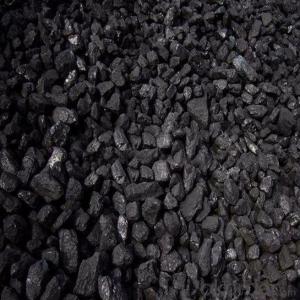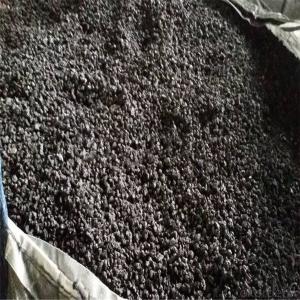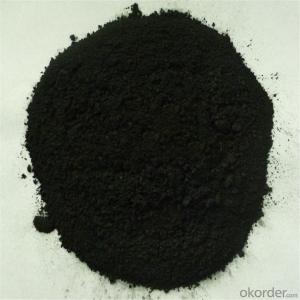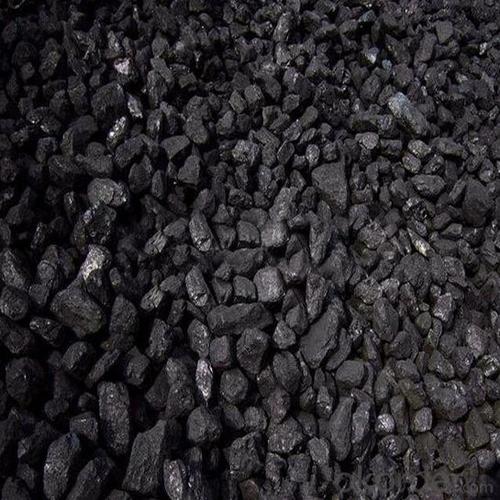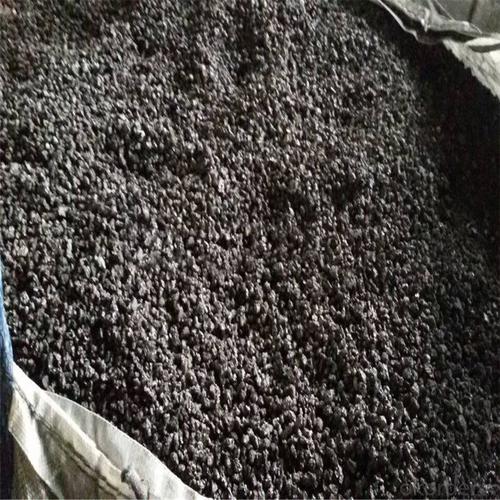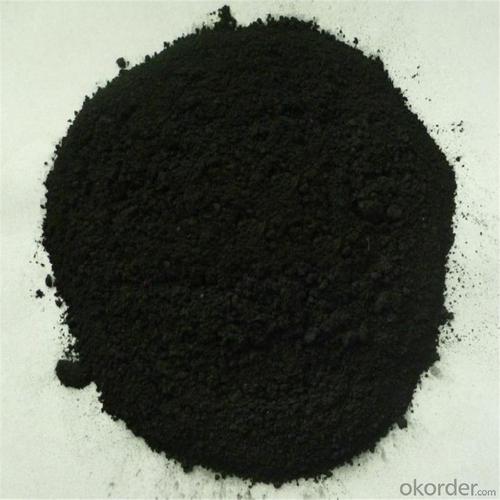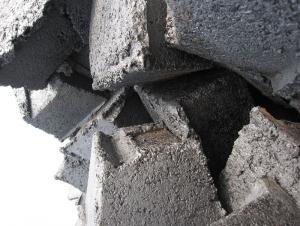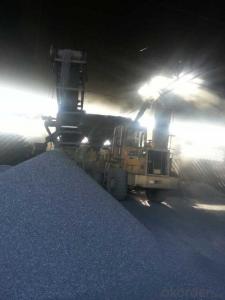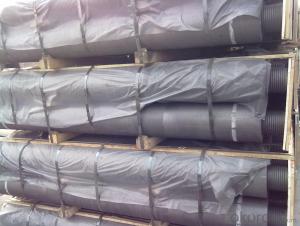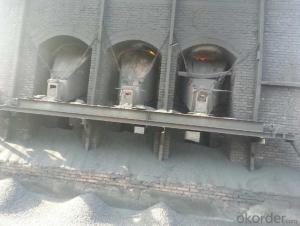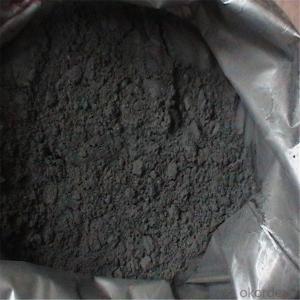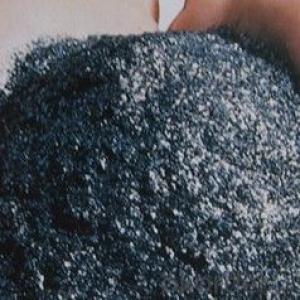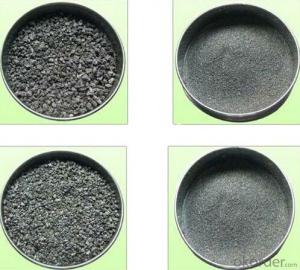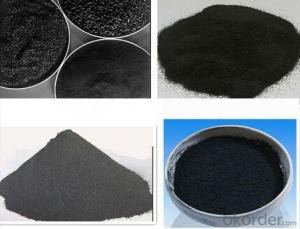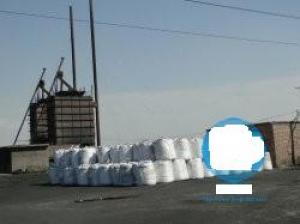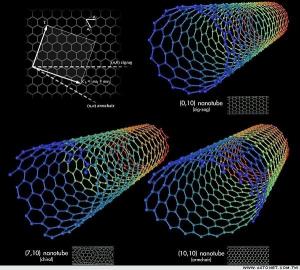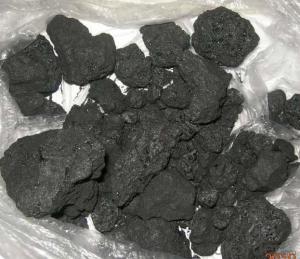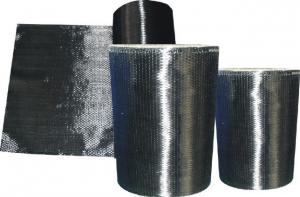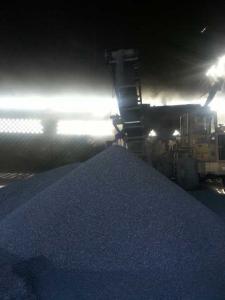Graphite powder Graphite Recarburizer High Carbon Low Sulphur For Metals Casting
- Loading Port:
- Dalian
- Payment Terms:
- TT OR LC
- Min Order Qty:
- 10 m.t
- Supply Capability:
- 500000 m.t/month
OKorder Service Pledge
OKorder Financial Service
You Might Also Like
Specifications of graphite powder:
- 98%-99% graphite powder
- high fixed carbon
- low sulphur and nitrogen
- ten year experience in processing of graphite products
- Graphite powder / Graphite carburant
Graphite powder purposes:
- As non-metallic mineral resources, has important defense strategic role
- Can be used for high and new technical projects, is of great economic and social benefits
- Is the metallurgical industry refractory material
- Is the chemical industry all kinds of corrosion of vessels, general equipment of carbon products
- Light industry is in pencil, ink and the main raw material of artificial diamond
- Is the electrical industry production carbon electrode and electrode carbon rods, battery materials
Graphite powder data sheet:
Our carbon additive has the features of high carbon, low sulphur, nitrogen and harmful impurities. So it has been widely used for steel-smelting, casting, brake pedal and friction material. | |||||||
Data sheet | |||||||
Product No. | Fixed Carbon | Sulphur | Ash | Volatile Matter | Moisture | Particle Size | Nitrogen Content |
Min | Max | Max | Max | Max | 90% | Max | |
HY-CA-01 | 98.5% | 0.50% | 0.80% | 0.80% | 0.50% | 1-5MM | N/A |
HY-CA-02 | 99.00% | 0.30% | 0.50% | 0.50% | 0.50% | 1-5MM | 100PPM |
HY-CA-03 | 98.50% | 0.05% | 0.80% | 0.70% | 0.50% | 0.3-5MM | 300PPM |
HY-CA-04 | 95.00% | 0.30% | 3.50% | 1.50% | 0.50% | 1-4MM | 700PPM |
HY-CA-05 | 99.00% | 0.03% | 0.50% | 0.50% | 0.50% | 0.3-5MM | 300PPM |
HY-CA-06 | 80.00% | 0.10% | 16.50% | 3.50% | 2.00% | 1-5MM | N/A |
Remark:The above mentioned grain sizes are recommended standard, if your have special requirements, please feel free to contact us. | |||||||
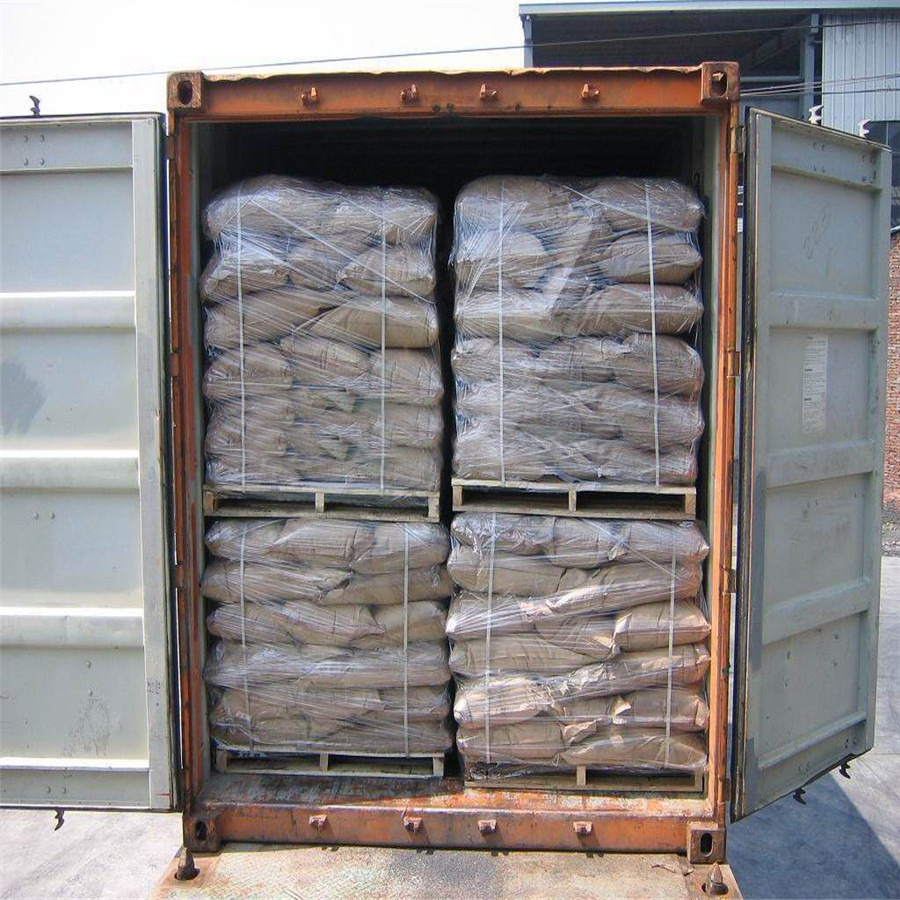
- Q: I don't know the battery. Although I know the former is chemical energy, I want to know if the 1 grain size 5 can compare the charge capacity with the 1 grain 5 1ANot much of a fortune, but thank you very much for the enthusiastic friend who gave me the answer. Thank you!
- The typical capacity of a AA carbon cell is 500maH, the voltage is 1.4V (average discharge platform) and the power is 0.7WHA typical capacity of AA alkaline battery is 2800maH, the voltage is 1.4V (average discharge platform) and the power is 3.9WHA AA disposable lithium iron battery, the typical capacity is 3000maH, voltage is 1.5V (discharge platform average), power is: 4.5WHA AA nickel hydrogen rechargeable battery, the maximum capacity is 2700maH, voltage is 1.2V (average discharge platform), power is: 3.2WHA AA lithium rechargeable battery, the maximum capacity is 800maH, the voltage is 3.7V (average discharge platform), power is: 2.9WHA AA lithium iron phosphate battery has a maximum capacity of 700maH, a voltage of 3.2V, and a power of 2.2WhBased on the above data, it is concluded that AA single iron lithium battery and disposable alkaline battery are the most durable, and their capacity (no matter size, current, discharge) is more than 6 times of that of carbon battery
- Q: What are carbon isotopes and how are they used in scientific research?
- Carbon isotopes are different forms of carbon that have varying numbers of neutrons in their atomic nuclei. The three most common carbon isotopes are carbon-12, carbon-13, and carbon-14. Carbon isotopes are used in scientific research for various purposes. Carbon-14, for example, is used in radiocarbon dating to determine the age of organic materials, such as fossils or artifacts. Carbon-13 is used in stable isotope analysis to study carbon cycling in ecosystems and understand food webs. By analyzing the ratios of different carbon isotopes, scientists can gain valuable insights into the processes and dynamics of natural systems.
- Q: What are the effects of carbon emissions on the Arctic ecosystem?
- Carbon emissions have significant effects on the Arctic ecosystem, primarily due to the phenomenon of global warming. As carbon dioxide and other greenhouse gases are released into the atmosphere, they trap heat, leading to increased temperatures worldwide. However, the Arctic is particularly vulnerable to these effects due to its unique characteristics. One of the most significant impacts of carbon emissions on the Arctic ecosystem is the rapid melting of ice. Rising temperatures cause glaciers and ice sheets to shrink, leading to the loss of habitat for ice-dependent species such as polar bears, walruses, and seals. These animals not only rely on the ice for resting and breeding but also for hunting and finding food. With the reduction of their natural habitat, their populations are declining, impacting the delicate balance of the Arctic food chain. Additionally, the melting of ice results in rising sea levels, which can have cascading effects on coastal areas. Many Arctic communities, including indigenous peoples, are located near the coast and depend on the sea for their livelihoods. Increased erosion, flooding, and storm surges due to rising sea levels threaten their homes, infrastructure, and traditional ways of life. Furthermore, carbon emissions contribute to ocean acidification, a process in which the absorption of excess carbon dioxide by seawater leads to a decrease in its pH level. This acidification has detrimental effects on marine organisms such as shellfish, corals, and plankton, which struggle to build and maintain their calcium carbonate structures. These organisms are essential food sources for various Arctic species, including fish, seabirds, and marine mammals. The decline in their populations disrupts the intricate web of life in the Arctic and can have far-reaching consequences. Climate change caused by carbon emissions also disrupts the timing and patterns of seasonal events, such as the timing of plant growth, the migration of birds, and the availability of food resources. This mismatch can have severe consequences for species that rely on specific timing for reproduction, migration, and survival. Overall, the effects of carbon emissions on the Arctic ecosystem are profound and wide-ranging. The loss of sea ice, rising sea levels, ocean acidification, and disrupted ecological processes all contribute to the vulnerability of Arctic species and communities. Urgent action to reduce carbon emissions, mitigate climate change, and protect this fragile ecosystem is crucial for the long-term preservation of the Arctic.
- Q: What are the different types of carbon-based pigments?
- Various industries widely use several different types of carbon-based pigments. Some of the most commonly used types are carbon black, graphite, charcoal, and lampblack. Carbon black, renowned for its intense black color, is a highly pure form of carbon produced through the incomplete combustion of hydrocarbon fuels. It finds extensive applications in inks, paints, plastics, and rubber products. Graphite, on the other hand, is an important carbon-based pigment known for its dark gray to black shade. It is a brittle material that can be easily crushed into a fine powder. Graphite is primarily used in pencils due to its ability to leave a smooth and consistent mark on paper. Additionally, it finds utility in lubricants, batteries, and electrical conductors. Charcoal, obtained by burning wood or organic materials without oxygen, is a carbon-based pigment admired for its deep black color. Artists commonly use charcoal as a drawing medium because it can be easily manipulated and smudged on paper, allowing for the creation of various tones and textures. Lampblack, also referred to as carbon black or soot, is a pigment produced by burning organic materials like oil or wood. It possesses a profound black hue and is frequently employed in printing inks, coatings, and dyes. Lampblack is also utilized in diverse industrial applications, including as a coloring agent in plastics and rubber products. These examples represent only a fraction of the diverse carbon-based pigments commonly employed. Each type possesses unique attributes and serves essential purposes in various industries.
- Q: How long will it last? 10National Day would like to do carbon baking ribs at home, how to do, how to marinate? For how long?.. Don't copy sticky posts. Now, tour TV's "eating meat" on earth is recorded in a grilled pork chop, wondering how that is done
- Use 1 tablespoons olive oil, 2 cloves of garlic, 2 tablespoons fresh Brazil, half lemon juice, 1 tablespoon Thyme, 1 jin spareribs, a little salt and black pepper method, 1. whole ribs washed, put the ingredients, marinated pork ribs 2 hours. 2., with charcoal fire roast ribs, while baking and brush ingredients, baked until golden. 3. if the oven can be placed in the oven 180C temperature, bake until golden
- Q: What are the impacts of carbon emissions on the stability of permafrost?
- Carbon emissions have a significant impact on the stability of permafrost. Permafrost refers to the layer of soil, sediment, and rock that remains frozen for at least two consecutive years. It covers vast areas in the Arctic, subarctic regions, and high-altitude mountain ranges. One of the main impacts of carbon emissions on permafrost stability is the acceleration of climate change. Carbon dioxide (CO2) and other greenhouse gases trap heat in the atmosphere, leading to global warming. As temperatures rise, permafrost starts to thaw, causing a range of negative consequences. Thawing permafrost releases large amounts of stored carbon into the atmosphere. This carbon was previously locked in the frozen organic matter, such as dead plants and animals, which accumulated over thousands of years. As permafrost thaws, microbes decompose this organic matter and release greenhouse gases like carbon dioxide and methane. These emissions create a positive feedback loop, further exacerbating climate change and leading to more permafrost thawing. The release of carbon from thawing permafrost contributes to the overall increase in atmospheric greenhouse gas concentrations. This, in turn, amplifies global warming and global climate change. The impacts are not limited to the Arctic; they affect the entire planet. Rising temperatures, sea-level rise, extreme weather events, and disruptions to ecosystems are some of the consequences of global climate change. Permafrost thaw also affects infrastructure and human settlements in the Arctic and subarctic regions. Buildings, roads, pipelines, and other infrastructure built on permafrost can be destabilized as the ground beneath them softens. This can lead to structural damage and economic losses. Additionally, communities that rely on permafrost for traditional activities such as hunting, fishing, and transportation face challenges as the landscape changes. The impacts of carbon emissions on permafrost stability are not only local but also global. The release of stored carbon from permafrost contributes to climate change, which has far-reaching consequences for ecosystems, economies, and societies worldwide. It is crucial to reduce carbon emissions and mitigate climate change to preserve permafrost and its vital role in the Earth's climate system.
- Q: How does carbon dioxide affect ocean acidity?
- Ocean acidification, a process caused by the presence of carbon dioxide, is responsible for the increased acidity in the ocean. Human activities, such as the burning of fossil fuels, release carbon dioxide into the atmosphere, and a significant portion of it is absorbed by the oceans. This excess carbon dioxide reacts with seawater and forms carbonic acid, which then dissociates into hydrogen ions and bicarbonate ions. The rise in hydrogen ions reduces the ocean's pH level, resulting in increased acidity. The elevated acidity of the ocean negatively impacts marine life in several ways. Marine organisms, including corals, shellfish, and plankton, are unable to construct and maintain their calcium carbonate structures, such as shells and exoskeletons, due to this condition. This can lead to slower growth rates, weakened structures, and higher mortality rates among these organisms. The survival and reproduction of various species, including fish and other marine animals, are also affected by ocean acidification. The changes in water chemistry disrupt their physiological processes, making it difficult for them to navigate, find food, and evade predators. Moreover, the increased acidity can alter the behavior and development of certain species, potentially causing changes in ecosystems and a decline in biodiversity. Ocean acidification can also have a cascading effect on the entire marine food web. Phytoplankton and other primary producers, which are the foundation of the food chain, may suffer due to the changing ocean chemistry. Consequently, the organisms that rely on them for sustenance are also impacted. This disruption can have far-reaching consequences for the entire ecosystem, including commercially valuable fish species and the livelihoods of coastal communities that depend on them. In conclusion, the emissions of carbon dioxide contribute to ocean acidification, which has severe consequences for marine life and ecosystems. It is crucial to comprehend and address this issue in order to safeguard the health and sustainability of our oceans and the countless species that depend on them.
- Q: How does carbon impact the formation of smog?
- Carbon plays a significant role in the formation of smog, particularly in the form of carbon monoxide (CO) and volatile organic compounds (VOCs). When fossil fuels are burned, such as in vehicle engines or power plants, they release carbon monoxide into the atmosphere. Carbon monoxide is a colorless and odorless gas that can react with other pollutants in the presence of sunlight to form ground-level ozone, a key component of smog. Furthermore, carbon-based compounds known as volatile organic compounds (VOCs) are also emitted from various sources, including industrial processes, gasoline vapors, and chemical solvents. These VOCs can undergo chemical reactions in the presence of nitrogen oxides and sunlight to create ground-level ozone as well. Both carbon monoxide and VOCs contribute to the formation of smog by reacting with nitrogen oxides (NOx) in the presence of sunlight. This chemical reaction forms ground-level ozone, which is a primary component of smog. Ozone is harmful to human health and the environment, and its formation is exacerbated by the presence of carbon emissions. Reducing carbon emissions is crucial to mitigating the formation of smog. Transitioning to cleaner and more sustainable sources of energy, such as renewable energy, can help decrease the amount of carbon released into the atmosphere. Additionally, implementing stricter emissions standards for vehicles and industrial processes can also contribute to reducing carbon emissions and consequently limit the formation of smog.
- Q: What is the concept of carbon neutrality?
- The concept of carbon neutrality refers to the goal of achieving a balance between the amount of carbon dioxide emissions released into the atmosphere and the amount of carbon dioxide removed from the atmosphere. It is an approach to combatting climate change and reducing greenhouse gas emissions by aiming to offset the carbon footprint of an individual, organization, or even an entire country. To achieve carbon neutrality, one must first measure and understand the amount of carbon dioxide emissions being generated. This includes assessing emissions from various sources such as energy production, transportation, agriculture, and industrial processes. Once the emissions are quantified, efforts are made to reduce these emissions through energy efficiency, transitioning to renewable energy sources, and implementing sustainable practices. However, not all emissions can be eliminated entirely. In such cases, carbon offset projects are utilized to neutralize the remaining emissions. These projects involve activities that remove carbon dioxide from the atmosphere, such as reforestation, afforestation, or investing in renewable energy projects. By supporting these initiatives, carbon neutrality can be achieved by balancing the emissions produced with carbon removal or reduction efforts. The concept of carbon neutrality is crucial in the fight against climate change as it acknowledges the responsibility of individuals, organizations, and governments to take action in reducing their impact on the environment. By striving for carbon neutrality, we can effectively contribute to mitigating climate change and creating a more sustainable future.
- Q: What is carbon dating and how does it work?
- Carbon dating is a scientific method used to determine the age of organic materials, such as wood, cloth, and bone, by measuring the amount of carbon-14 (C-14) present in the sample. It is based on the principle that all living organisms contain a small amount of radioactive carbon-14, which is formed in the upper atmosphere when cosmic rays collide with nitrogen atoms. This radioactive isotope of carbon is unstable and decays over time, transforming into nitrogen-14. The process of carbon dating begins with collecting a sample from the object of interest. This sample is typically organic matter that was once part of a living organism. The sample is then treated to remove any contaminants and prepared for analysis. In order to determine the age of the sample, scientists measure the ratio of C-14 to stable carbon-12 (C-12) in the sample. This is done using an accelerator mass spectrometer (AMS), a highly sensitive instrument that can detect and measure extremely low levels of C-14. By comparing the C-14 to C-12 ratio in the sample to the known ratio in the atmosphere at the time the organism died, scientists can calculate how long it has been since the death of the organism. The half-life of C-14, which is the time it takes for half of the radioactive isotope to decay, is approximately 5,730 years. This means that after 5,730 years, half of the C-14 in a sample will have decayed into nitrogen-14. By measuring the amount of C-14 remaining in a sample and knowing its half-life, scientists can estimate the age of the sample. Carbon dating is a valuable tool for archaeologists, paleontologists, and geologists as it allows them to accurately determine the age of ancient artifacts, fossils, and geological formations. However, it is important to note that carbon dating is only effective for dating materials up to about 50,000 years old, as beyond this point the amount of C-14 remaining becomes too small to accurately measure.
Send your message to us
Graphite powder Graphite Recarburizer High Carbon Low Sulphur For Metals Casting
- Loading Port:
- Dalian
- Payment Terms:
- TT OR LC
- Min Order Qty:
- 10 m.t
- Supply Capability:
- 500000 m.t/month
OKorder Service Pledge
OKorder Financial Service
Similar products
Hot products
Hot Searches
Related keywords
